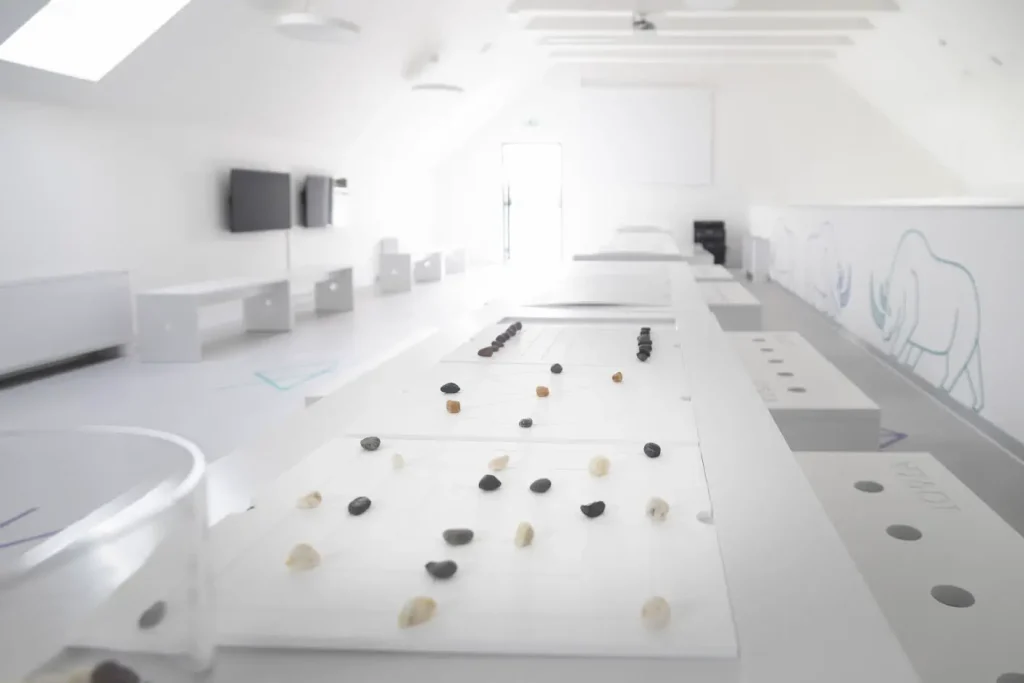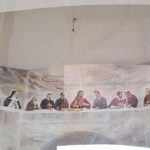Getting kids interested in anything offline is getting harder and harder these days, but one place willing to try is the recently opened Iovia Archaeoogical Park in Ludbreg.
Iovia, which was opened by the Minister of Culture in May this year, documents several thousand years of Ludbreg history, with corresponding Croatian and global chronologies, as well as featuring two Roman villas next door. Located just a few mintutes from the church which houses Croatia’s only certified miracle, as well as Ludbreg’s most famous claim – the Centre of the World – Iovia is a great addition to an action-packed day trip to this most unusual town. You can learn more about the Iovia Archaeological Park here.
The top floor is home to a thoughtfully-designed seminar room, and one that will prove popular with kids when Iovia soon opens its doors to school eexcurisions. Among the interactive things to learn and try are a selection of Roman board games. There are three in all – Latrunkuli, Teri Lapilli, and Mlin – Merellus. A chance for kids to learn to play some new games offline, as well as to reflect, perhaps, on a childhood some 2,000 years before Instagram and Tik Tok.
Iovia has made available the rules of the game, and I have added some video guides from YouTube.
LATRUNKULI
Rules of the game:
In the game, two players face each other over a rectangular board marked with a grid of squares. Each player has the same number of chips, with one player differing from the other in color. In some versions of this game, each player also has a “dux”, a special token with increased powers. The art of the game is in capturing the opponent’s chips. The chips move all over the board and catch each other by surrounding each other; a token of one color caught between two others is removed from the game. The winner is the player who catches all the opposing parts.
TERNI LAPILLI
Rules of the game:
In the game, two players face off over a rectangular board marked by a square with nine squares (chip slots) connected by lines (two or four lines that intersect in the center). In addition to various square variants, wheel-like circular surfaces are also known. Each player has three chips, with one player differing from the other in color. The winner is the player who first combines three chips in a row. The game is considered the ancestor of the modern version of tic – tac – toe, and is often identified with one version of the ancient game Mlin or Merellus (Three men ‘s morris). Many details about this game have remained puzzling to this day. Lately, researchers of ancient games have challenged the application of the circular variant because it is likely that the incised wheels served as bases for other types of games, such as various throwing games.
MLIN – MERELLUS
Mlin (Mill) is a game for two players. The plate consists of three concentric squares and several transversals, making 24 points of intersection. Each player has nine chips, usually in black and white. Players take turns placing a chip anywhere on the board, trying to create a series of three of their own chips (mill). Each player tries to prevent his opponent from forming his own order. Whoever forms a row of three may remove one of the opponent’s chips (provided it is not part of the whole row). Once all the chips have been placed, each player alternately moves one chip to the adjacent free spot. Then each tries to create rows and remove the opponent’s chips once the player has only three chips left on the board, he can move his chip to any available space. The winner is the player who reduces the opponent to two chips.
You can learn more about Iovia Archaeological Park on the official website.
Learn more about Ludreg in the TC Ludbreg in a Page guide.











